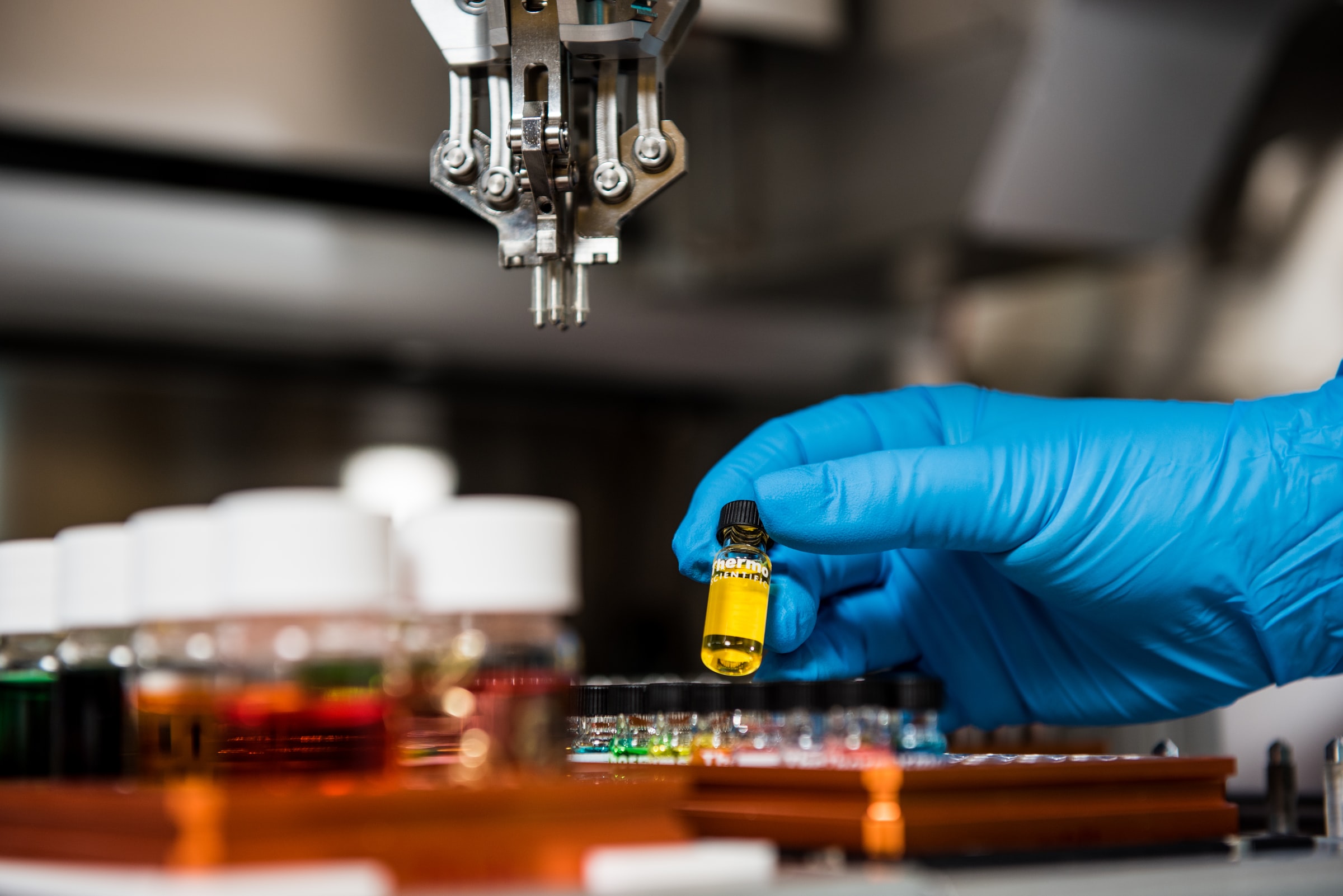By Alyssa Gafford-Gaby
First recipients of Texas A&M Innovation’ Translational Investment Fund receive funding to advance the development of commercially relevant technologies.
Texas A&M University Texas A&M Innovation recently made its first four investments in faculty innovations through the Translational Investment Fund. This new program aims to de-risk technologies and bridge the common gaps that arise in early-stage development to make the technologies better prepared to enter the marketplace. With the help of a faculty selection committee, four projects were chosen to receive investments ranging from $50,000-$75,000 to fund developing solutions to specific barriers to commercialization.
Prof. Mark Benden, the chair of the Translational Investment Fund selection committee, said the topics of applications they received were diverse, ranging from arts and humanities to virtual reality to COVID-19 and other medical technologies.
“For this particular funding, we aimed at critical bridge funds that could help technology reach the next level of funding research or proof of concept that would jumpstart the commercialization efforts,” Benden said.
One of the investments, awarded to Dr. Shoshana Eitan of the Department of Psychological and Brain Sciences and her collaborator, Dr. Ravikumar Majeti of the Department of Pharmaceutical Sciences, focuses on Naloxone, used to block the activity of opioids and prevent opioid overdoses. Because Naloxone only lasts a short period of time, it must be readministered multiple times. Eitan said the technology they are developing allows for Naloxone to last longer.
“We used nanoparticle technology to generate a prototype for a new formula of naloxone that can be taken orally and which remains active in the body for a longer time,” Eitan said. “This formula is expected to improve the ability to save individuals presenting symptoms of opioid overdose. In this project, we will further improve this formula and test its effectiveness and safety in order to prepare it for clinical trials.”
A second investment was made in technology developed by Dr. Srinath Palakurthi, Department of Pharmaceutical Sciences, focused on nanomedicines to aid in relieving Inflammatory Bowel Disease (IBD). According to Palakurthi, IBD is a chronic condition affecting more than seven million people worldwide, costing about $6.8 billion annually.
“Long term use of the currently marketed medications [for IBD] causes serious side effects when used. To address these issues, we are developing nanomedicines of existing drugs that are not only superior to the marketed products but also very safe, as they are made of food-grade protein,” Palakurthi explained.
According to Palakurthi’s proposal, the nanomedicines may prove to be superior to the marketed products currently available due to their narrowly targeted approach to delivery.
A third investment was awarded to Dr. Wenshe Liu in the Department of Chemistry. Liu’s project involves testing the drug Bepridil, a medication already in use for other diseases that shows promise in preventing COVID-19 infections.
“Bepridil is an approved medication for coronary artery disease,” said Liu. “The COVID-19 drug repurposing program in the Texas A&M Drug Discovery Laboratory discovered that Bepridil can effectively prevent infection by SARS-CoV-2, the pathogen of COVID-19, and [the project] is exploring its clinical trials in humans.”
The final project focuses on assembly, manufacturing, and construction projects. Dr. Wei Yan of the Department of Architecture said these kinds of projects are becoming increasingly complex with little to no improvement to instruction manuals, contributing to decreased employee performance. Dr. Yan and his team have developed technology using virtual LEGO® bricks to accurately guide projects.
“BRICKxAR is an innovative Augmented Reality-powered instruction technology for assembly, demonstrated through LEGO® construction,” Yan said. “BRICKxAR superimposes the digital image of 3D virtual LEGO® bricks on the physical bricks, through accurate alignment between virtual and physical objects and realistic object occlusion, to guide the construction process.”
Tyson Voelkel, President and Chief Executive Officer for the Texas A&M Foundation, said being able to assist in funding projects furthers the mission of the University to support students and faculty who can make a difference in the world.
“The Texas A&M Foundation takes as much pride in supporting cutting-edge grants for research as we do in scholarships for students and assisting in recruiting amazing faculty,” said Voelkel. “Aiding the efforts of Texas A&M Innovation to increase the impact of faculty research is just as exciting for us, especially these grants which have the chance to make a difference in the world rapidly.”
The Translational Investment Fund focuses on technologies that aren’t quite ready for the market. According to the Vice President for Entrepreneurship and Economic Development, Andrew Morriss, the investments help these innovations become ready for industry so they can make bigger impacts on the world.
“These four investments are just what we were looking for when we created the fund,” said Morriss. “Our goal was to help get our faculty’s research closer to real world impacts.”
The Translational Investment Fund has been in the works since the spring, according to Michael Sharer, Associate Vice President of Commercialization.
“This kind of program is critically important to the overall commercialization process, as it helps speed up market adoption and address specific technical roadblocks that can otherwise prevent a nascent technology from having commercial impact,” said Sharer. “We had a really strong applicant pool in our inaugural round of this fund, so we had some difficult decisions to make, but our faculty committee was very helpful in making these targeted and important investment decisions.”
Media Contact: Jennifer Briggs
For more information on the Translational Investment Fund, visit the program webpage.


